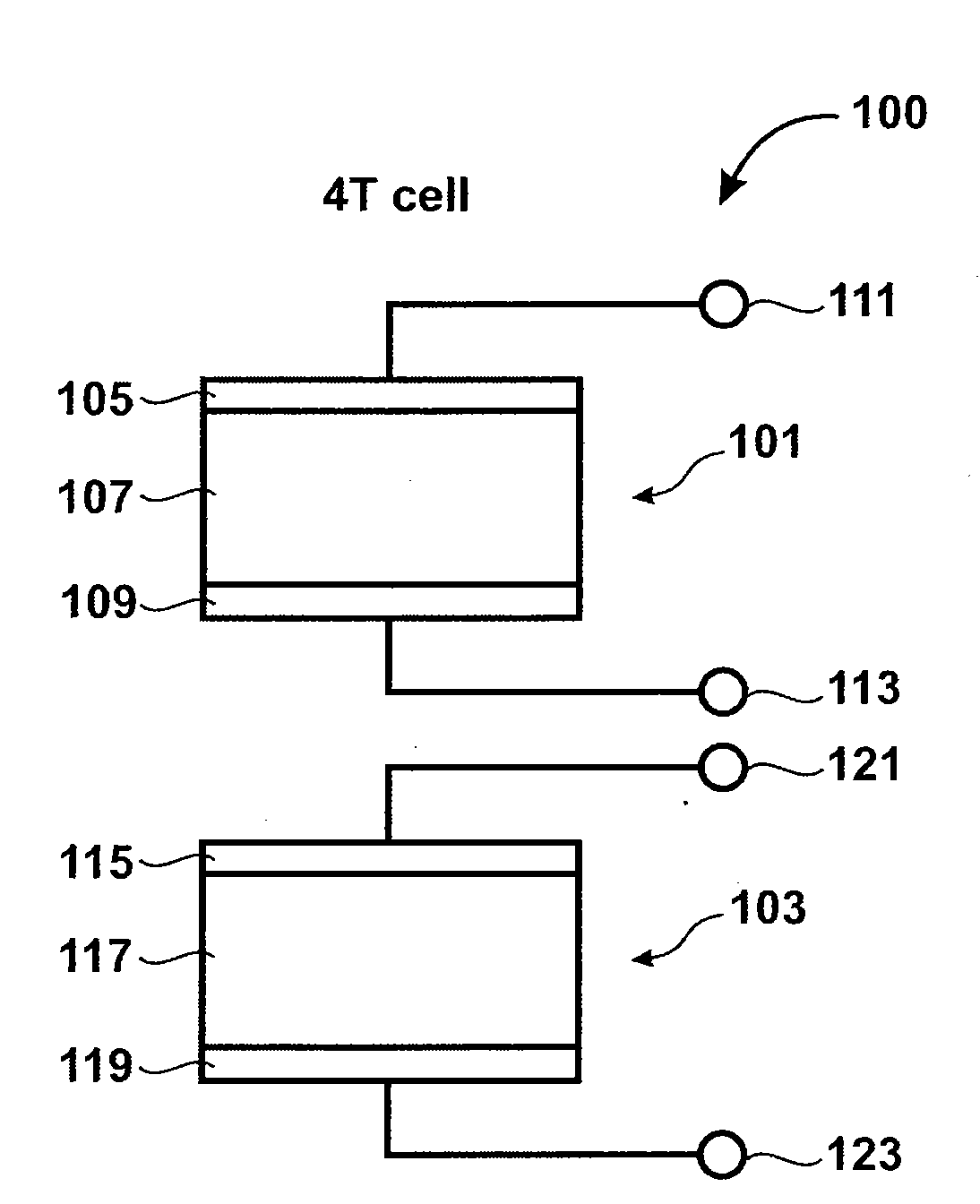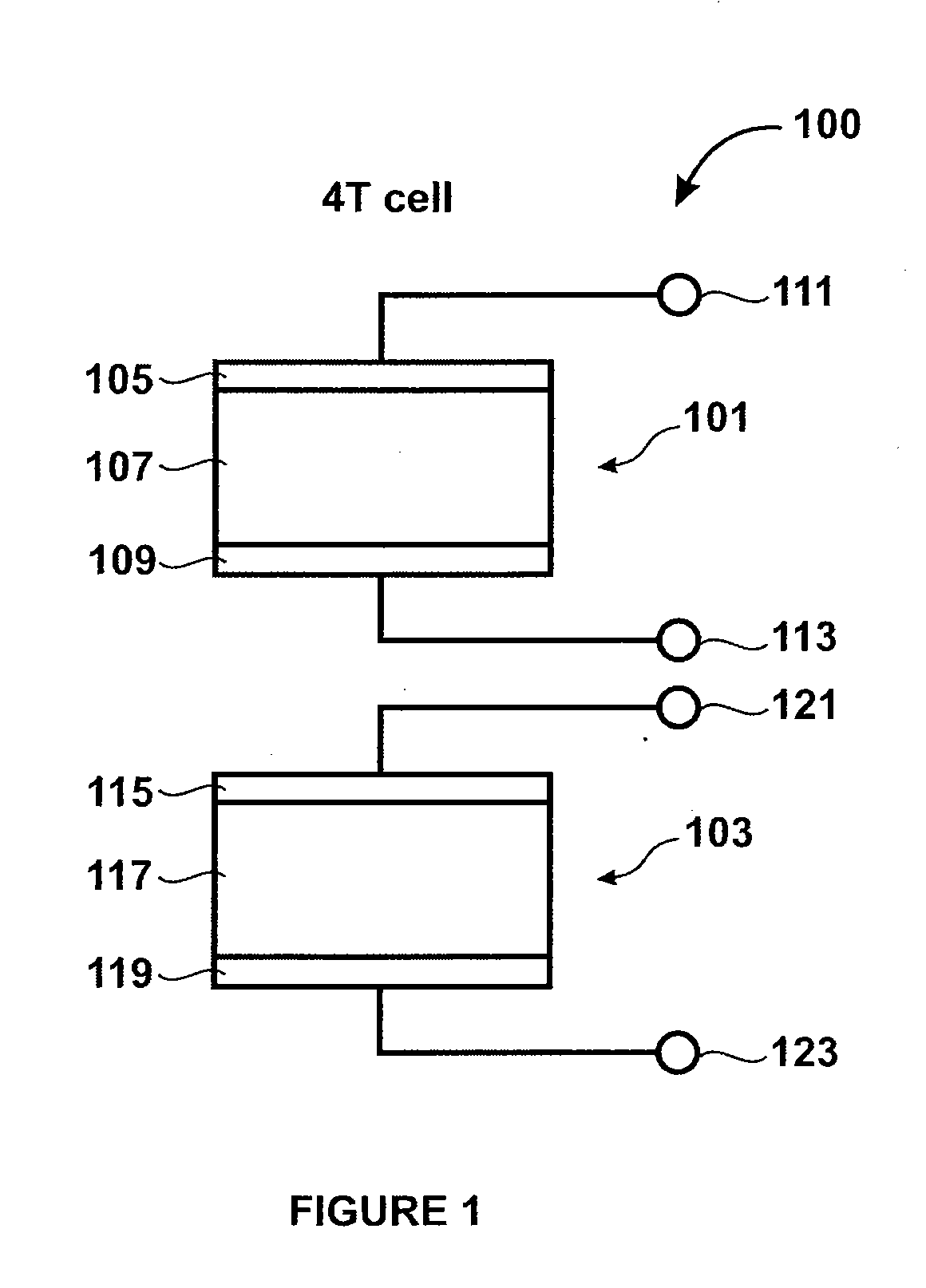Four terminal multi-junction thin film photovoltaic device and method
- Summary
- Abstract
- Description
- Claims
- Application Information
AI Technical Summary
Benefits of technology
Problems solved by technology
Method used
Image
Examples
Embodiment Construction
[0016]According to embodiments of the present invention, a method and a structure for forming thin film semiconductor materials for photovoltaic applications are provided. More particularly, the present invention provides a method and structure for manufacture of high efficiency multi-junction thin film photovoltaic cells. Merely by way of example, the present method and materials include absorber materials made of copper indium disulfide species, copper tin sulfide, iron disulfide, or others for multi-junction cells.
[0017]FIG. 1 is a simplified diagram 100 of a four terminal multi-junction photovoltaic cell according to an embodiment of the present invention. The diagram is merely an illustration and should not unduly limit the scope of the claims herein. One of ordinary skill in the art would recognize other variations, modifications, and alternatives. As shown, the present invention provides a multi-junction photovoltaic cell device 100. The device includes a lower cell 103 and a...
PUM
 Login to View More
Login to View More Abstract
Description
Claims
Application Information
 Login to View More
Login to View More - R&D
- Intellectual Property
- Life Sciences
- Materials
- Tech Scout
- Unparalleled Data Quality
- Higher Quality Content
- 60% Fewer Hallucinations
Browse by: Latest US Patents, China's latest patents, Technical Efficacy Thesaurus, Application Domain, Technology Topic, Popular Technical Reports.
© 2025 PatSnap. All rights reserved.Legal|Privacy policy|Modern Slavery Act Transparency Statement|Sitemap|About US| Contact US: help@patsnap.com



